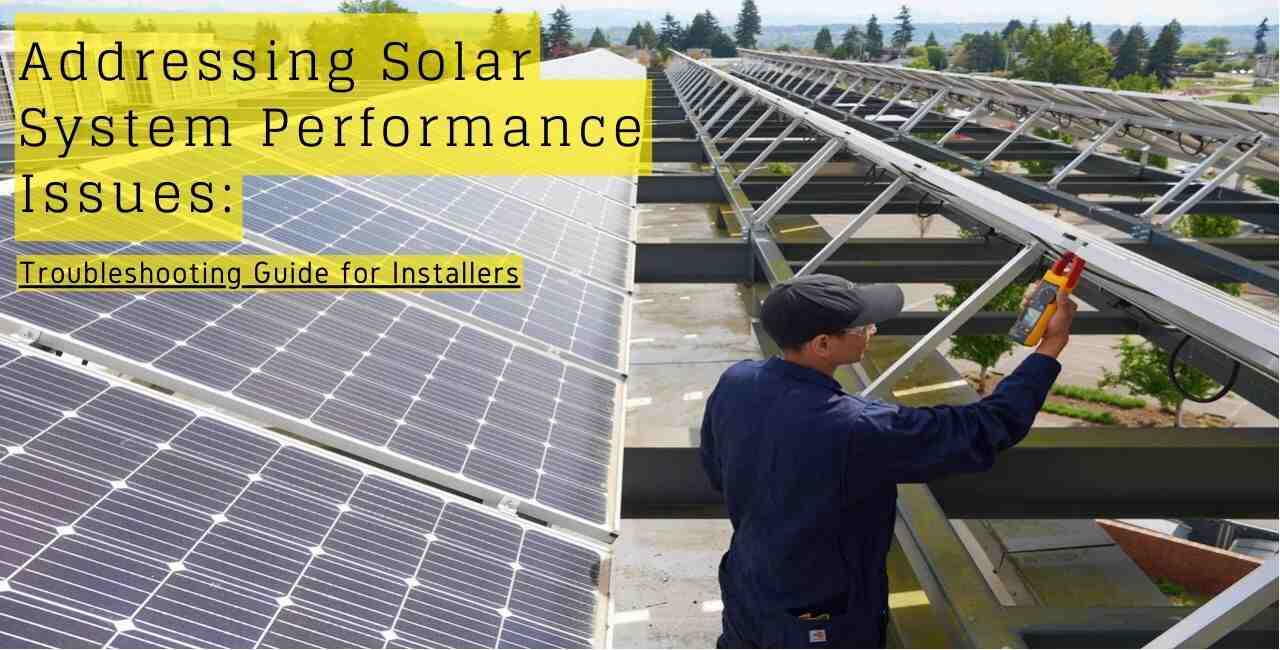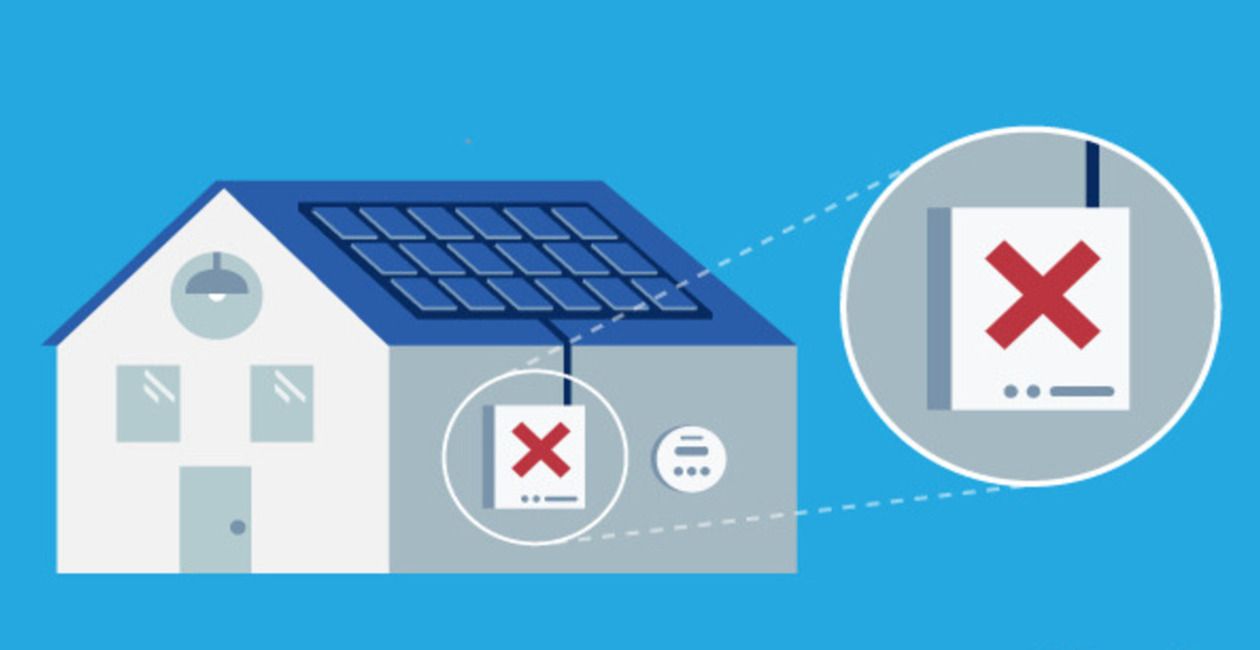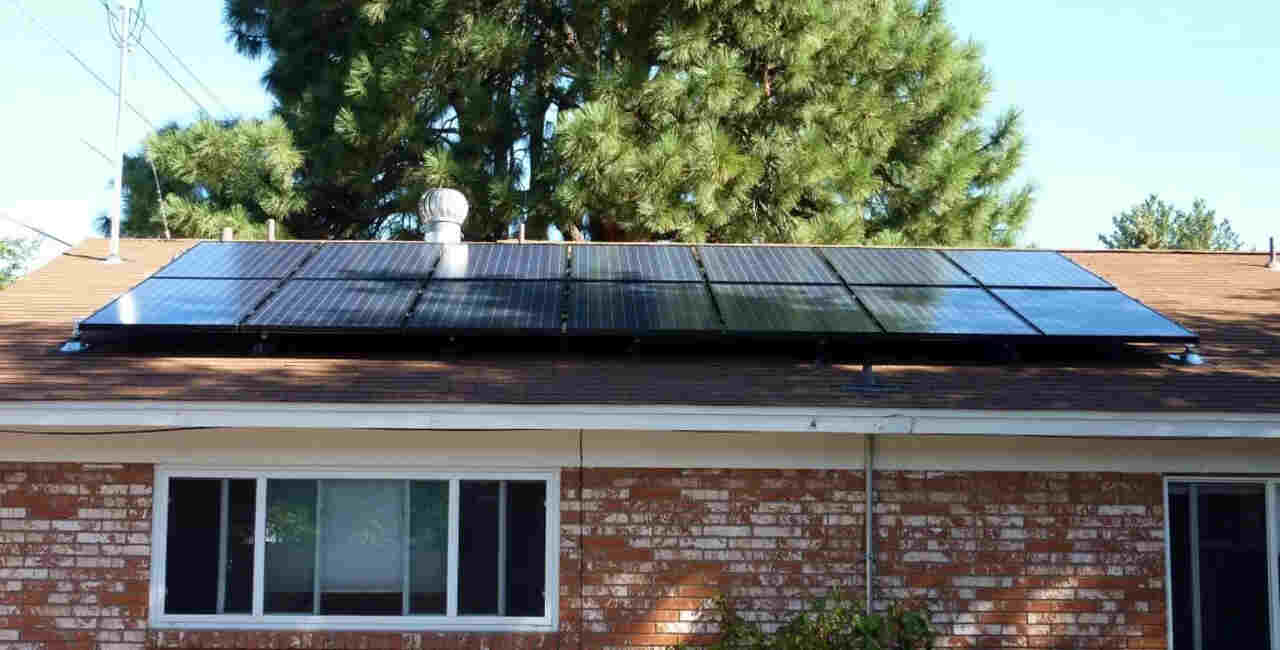Addressing Solar System Performance Issues: Troubleshooting Guide for Installers

A sustainable approach for generating electricity for homes and businesses is through solar power, which is becoming more and more well-liked and ecologically beneficial. Solar systems, like any complicated system, can encounter performance challenges that reduce their output and efficiency. Installers must have the expertise to identify problems when solar systems perform poorly and resolve them successfully.
In this troubleshooting article, we'll look at typical performance issues with solar systems and provide installers with workable fixes. Installers may contribute to maximizing the performance and longevity of solar systems by comprehending the underlying causes of these problems and putting the right solutions in place. This will guarantee optimal energy generation for their clients.
Common Performance Issues in Solar Systems
Solar systems are not exempt from performance issues that could affect their overall output and efficiency, as with any complicated system. In this section, we will examine some of the most prevalent performance problems that solar systems encounter and talk about their possible causes and fixes.
Solar system owners and installers may efficiently diagnose and optimise their systems to ensure optimal energy output by being aware of these problems.
Reduced Energy Output
A decline in energy production is one of the main performance problems solar systems encounter. This can be brought on by several things, including the buildup of dust and grime on the solar panels, shade from neighboring structures or plants, the aging of the panels over time, or issues with the electrical connections. Regular panel cleaning and maintenance are essential to solving this problem.
Additionally, pruning neighboring trees or adding shade-tolerant panels can reduce shading issues, and checking and fixing broken connections can return energy output to its ideal level.
Poor System Efficiency
The efficiency of the system measures how well solar panels produce power from sunshine. Poor system efficiency can be caused by various elements, including inappropriate panel orientation, mismatched panel sizes or technologies, inefficient inverters, and insufficient wiring.
To maximise the amount of sunshine exposure during the day, installers should make sure that the panels are appropriately positioned and inclined. Additionally, appropriate panels and inverters can assist increase system efficiency, as can high-quality wiring and connections.
Intermittent Power Generation
The optimal power source for solar systems should be continuous and stable. However, difficulties like weak connections, poor wiring, or faults with the inverter might lead to inconsistent power generation. These problems may cause the system to go down entirely or experience power fluctuations.
To fix this problem, it is imperative to inspect and tighten all electrical connections, replace any damaged wire, and examine the inverter for mistakes. Installing monitoring systems can also assist in identifying sporadic performance issues and facilitating prompt remediation.
Shading Complications
For solar systems, shading is a major problem since even a tiny amount of shadow may have a big influence on overall energy production. Common causes of shade include neighboring trees, buildings, or other objects that, during particular times of the day, throw shadows on the panels.
A careful investigation of the shading during the system design phase and the application of shade mitigation strategies, such as bypass diodes, micro-inverters, or power optimizers, are the answers. With the help of these technologies, panels may operate independently and reduce the performance impact of shading on the overall system.
Electrical Faults
System inefficiencies and significant safety risks can result from electrical faults. The movement of electricity throughout the system might be hampered by problems like loose connections, broken wiring, or blown fuses. Thermal imaging and visual examinations, part of routine inspections, can assist in finding these flaws.
By tightening connections, swapping out defective parts, and assuring adherence to electrical rules and standards, installers should solve any discovered electrical concerns as soon as possible.
Both system owners and installers must be aware of typical performance difficulties with solar systems. Recognizing these problems and comprehending their root causes paves the way for the implementation of practical fixes that restore optimal energy production. To solve and prevent these performance issues, regular maintenance, correct system design, shading analysis, and monitoring systems are essential.
Solar system owners may maximize their investments in renewable energy and support a sustainable future by adopting preventative steps and guaranteeing prompt troubleshooting.
Diagnosing and Troubleshooting Inverter Problems

The inverter is a critical component of any solar system, responsible for converting the direct current generated by solar panels into electricity. However, inverters can have performance difficulties that affect the overall effectiveness and functioning of a solar installation, just like any complicated electrical gear.
In this section, we'll look at typical inverter faults, talk about some of their possible causes, and offer troubleshooting methods for identifying and fixing these problems. Solar system owners and installers may guarantee optimum energy output and system lifespan by recognising and quickly resolving inverter issues.
Common Inverter Problems:
- No Output Power: When inverters are unable to generate any output power, it is one of the most obvious problems. There might be a number of reasons why there is no power generation when the inverter is turned on. These might include malfunctioning electrical wiring, damaged electronics, or loose connections.
- Low Output Power: The inverter may occasionally supply electricity, but the output may be less than anticipated. Numerous factors, including overload, battery problems, or inadequate input power, may be to blame.
- Overheating; Inverters are susceptible to overheating, mainly if they are used continuously at full power. To protect the device from harm, overheating may lead to performance deterioration or even a total shutdown.
- Strange Sounds: Strange noises originating from the inverter, such as buzzing or humming, may be an indication of faulty capacitors, loose parts, or a failed fan.
- Display errors: Modern inverters frequently include digital displays that show vital information about how they function. Blank displays, inaccurate readings, or display mistakes might be signs of internal problems or a malfunctioning display device.
- Automatic Shutdowns: Inverters may turn off on their own for no apparent cause. Internal protective systems that are activated by overload, short-circuit, or other errors may cause this.
Troubleshooting Steps:
- Verify Connections: Verifying each connection is the first step in identifying any inverter problems. Make that the AC output wires are properly connected to the load and that the DC input from the power source, which is often batteries or solar panels, is firmly attached.
- Examine Batteries: If the inverter is powered by batteries, examine the voltage and state of each one. Low output power or automated shutdowns may be brought on by weak or broken batteries.
- Load Analysis: Analyse the load to make sure it doesn't go above the inverter's capability. Shutdowns and even inverter damage can result from overload. If necessary, think about dispersing the burden.
- Cooling and Ventilation: To avoid overheating, install the inverter in a well-ventilated space. Get rid of any dust or debris that may be obstructing the cool fans.
- Visual Inspection: Examine the internal parts of the solar inverter visually. Keep an eye out for worn-out or broken components, loose connections, and physical wear.
- Reset and reconfigure: A reset button or setting may be included on some inverters. Try returning the inverter to its factory default settings and, if necessary, reconfiguring it.
- Software and Firmware upgrades: Look for any accessible software or firmware updates on the manufacturer's website. Updating the inverter's software can alleviate recognised problems and boost efficiency.
- Consult the manual: For particular troubleshooting advice for your inverter model, always consult the manufacturer's handbook or user guide.
Identifying and Resolving Panel Efficiency Loss
Solar panels are a popular and environmentally friendly source of energy, converting sunlight into electricity. however, solar panels can lose efficiency with time, which lowers their power production and general performance. Maintaining optimum energy output requires identifying the causes of efficiency decline and taking the necessary steps to address them.
In this section, we will examine typical reasons for panel efficiency loss and offer tips on how to spot and resolve these problems.
Understanding Panel Efficiency Loss
When a solar panel's capacity to convert sunlight into useful power decreases, efficiency loss takes place. To this loss, several variables contribute. First, sunlight is blocked and efficiency is decreased by the buildup of dust, grime, leaves, or bird droppings on the panel's surface.
In addition, over time, shadows from adjacent objects like trees, buildings, or other structures reduce the quantity of sunshine the panels get and lessen their output. Additionally, a variety of meteorological variables, such as UV radiation, humidity, and severe temperatures, can impair the functioning of solar panels and reduce their efficiency.
Finally, electrical problems with the solar panel system, such as defective wiring, weak connections, or broken components, can result in power losses and lower efficiency.
Identifying Panel Efficiency Loss
To identify efficiency loss in your solar panels, consider the following steps:
- Visual Inspection: Examine the solar panels visually for any indications of physical harm, such as fractures or discolouration. View the panels from various perspectives to identify any potential shading concerns brought on by neighbouring items.
- Performance Monitoring: Regularly check the solar panels' electricity output. Use a monitoring system if you have one, and compare the output now with previous results. Power generation that significantly lowers might be a sign of efficiency deterioration.
- Weather analysis: Take into account the local weather conditions. A considerable drop in solar panel production during periods of intense sunshine might be a symptom of an efficiency issue.
- Shading Analysis: Throughout the day, keep an eye on the solar panels to spot any shading concerns brought on by neighbouring structures or plants. Keep track of when and where shadowing happens so that you may plan your mitigation tactics accordingly.
Resolving Panel Efficiency Loss
- Cleaning: Regularly clean the solar panels with water and a soft brush or sponge to avoid scratching them. Observe the safety precautions and manufacturer's instructions. To prevent heat shock, avoid cleaning during the height of the sun's rays.
- Shading Mitigation: Mitigate shadowing by pruning or removing any trees, limbs, or other objects that cast shadows onto the solar panels. To increase the amount of sunshine exposure, think about moving or tilting the panels.
- Repairs and maintenance: Take fast action to fix any physical issues like cracks or loose connections. For repairs and replacements of damaged components, seek expert assistance.
- Panel Replacement: It can be required to swap out the existing solar panels for newer, more efficient types if they are considered old or have suffered irreparable performance decline.
- System optimization: Evaluate the entire system layout and pinpoint any room for improvement, such as updating inverters or rearranging wiring.
You can improve the performance and longevity of your solar panels by proactively recognizing and resolving efficiency loss. For your solar panel system to provide the most energy possible, regular maintenance, cleaning, and monitoring are crucial procedures. Your solar panels will keep producing sustainable energy for years to come if you take good care of them.
Dealing with Shading and Obstruction Issues

As a clean and sustainable form of energy, solar energy has experienced substantial growth in popularity. However, shade and obstacles can negatively affect a solar system's performance and reduce its ability to produce electricity. For a system to operate at its best, an installation must be aware of and take care of these problems.
In this section, we'll look at typical shade and obstruction issues and provide workable fixes.
Understanding the Impact of Shading and Obstruction
Solar panels may receive less sunlight due to shading and impediments such as surrounding buildings, trees, and other structures. The effectiveness of the entire system can be dramatically reduced by even little shadowing on a single panel. To find possible trouble spots, it's crucial to examine the shade patterns throughout the day and year.
Conduct a Comprehensive Site Assessment
Conduct a comprehensive site survey before installing a solar system to find any potential shading or blockage problems. To assess the sun's course and locate potential sources of shadow, use instruments like a solar pathfinder or software for shade analysis. You may develop an optimised system configuration and find solutions to shading issues with the aid of this examination.
Optimize System Design
- Consider the following design factors to reduce shadowing impact:
- Install panels on surfaces that receive little shade throughout the day, such as roofs or open spaces.
- Optimise panel tilt and position to increase sun exposure and reduce the effects of shade.
- Implement a string design that is optimized to lessen the impact of partial shading on system performance as a whole. Use power optimizers or micro-inverters as technology to lessen the effects of shade on the impacted panels.
Tree Trimming and Vegetation Management
Trees can cause shade issues. Consider tree cutting or vegetation management techniques if trees are blocking the sun. Determine the appropriate course of action in consultation with the property owner or a qualified arborist to protect the health of the trees and reduce shadowing difficulties.
Overcoming Building and Structural Obstructions
It might be difficult to remove obstructions brought on by structures such as buildings, chimneys, or nearby ones. Investigate the following possibilities in such circumstances:
- If at all feasible, move the panels to a spot on the property that is free from obstructions.
- To elevate the panels over obstacles and increase sun exposure, install taller mounting structures or use tilting mechanisms.
- Take into account extending the solar system to other accessible, unobstructed areas of the land.
Monitoring and Maintenance
To guarantee optimum system functioning, regular monitoring and maintenance are essential. Install a monitoring system that offers real-time information on each panel's performance. This makes it possible for you to quickly discover any shade or blockage problems and take appropriate action. Encourage system owners to take initiative and notify of any observable changes or shading signals.
To optimize system performance and customer happiness, solar installers must address shading and obstruction challenges. Installers may effectively diagnose and reduce shade issues by doing a thorough site evaluation, optimizing system design, maintaining vegetation, and establishing effective monitoring.
A well-designed and well-maintained solar system will produce more energy and have long-term advantages for both the installers and the system owners.
Conclusion
Installers may use this comprehensive resource to fix performance issues with solar systems by using this troubleshooting guide. It equips installers to identify issues quickly by detailing typical difficulties and offering workable solutions.
To maximise system efficiency and lifetime, the guidance stresses the value of comprehensive inspection, maintenance, and frequent monitoring. It also emphasises the value of appropriate system design, installation methods, and component selection to prevent performance issues before they arise.
Installers may easily solve solar system issues with the help of this manual, guaranteeing optimal performance, client happiness, and the continuing expansion of sustainable energy options.

